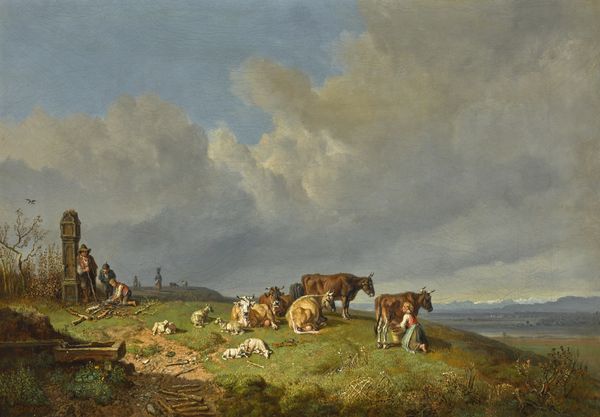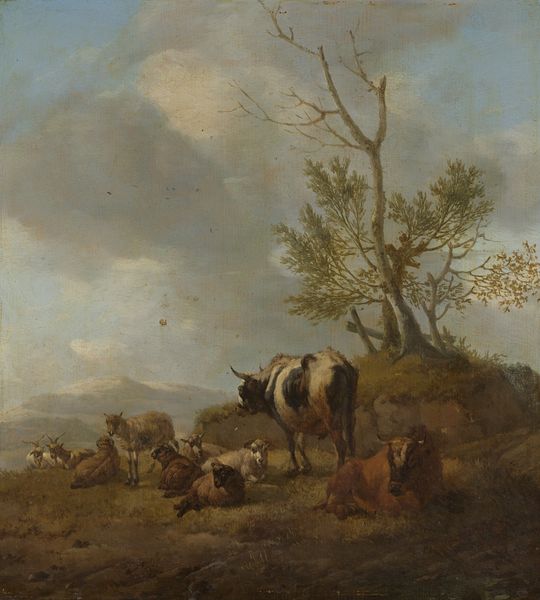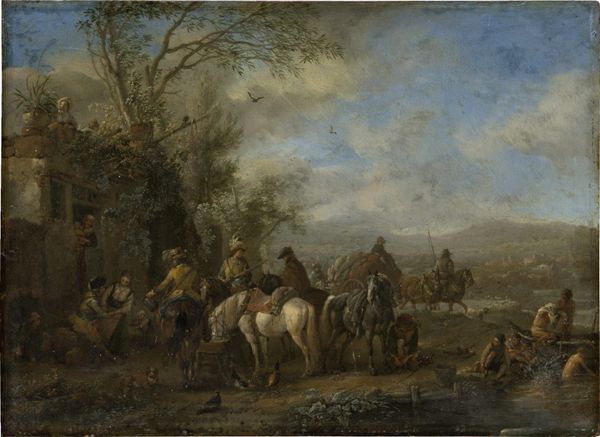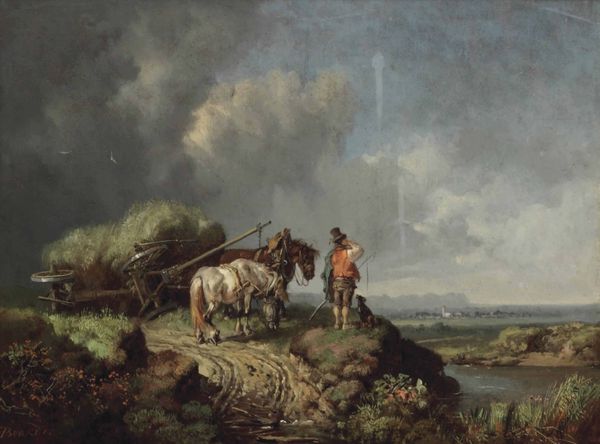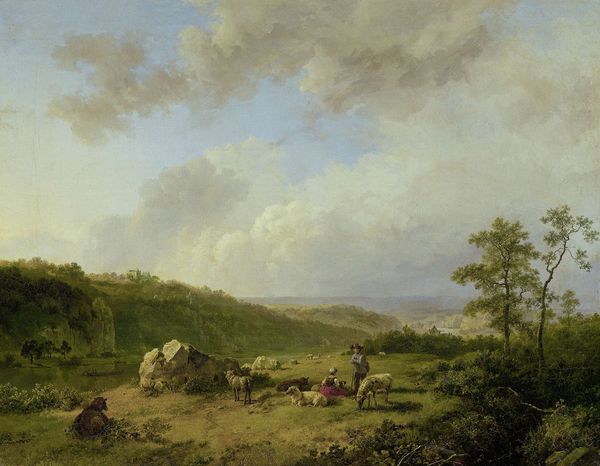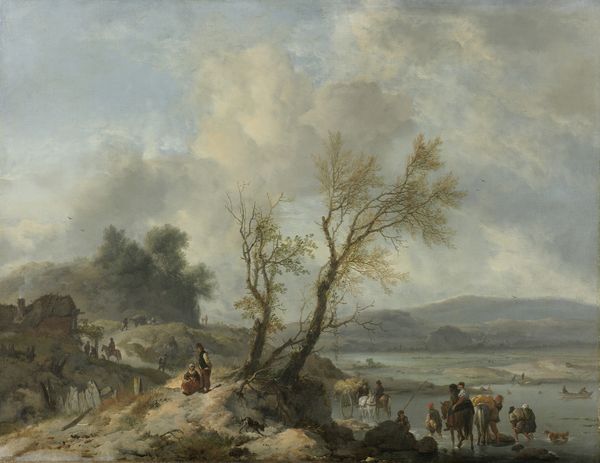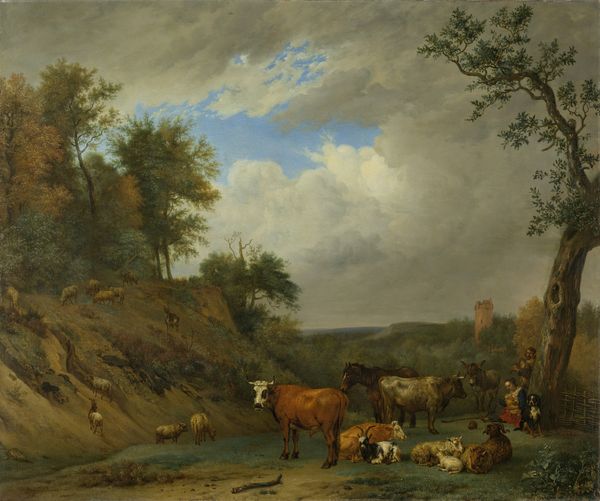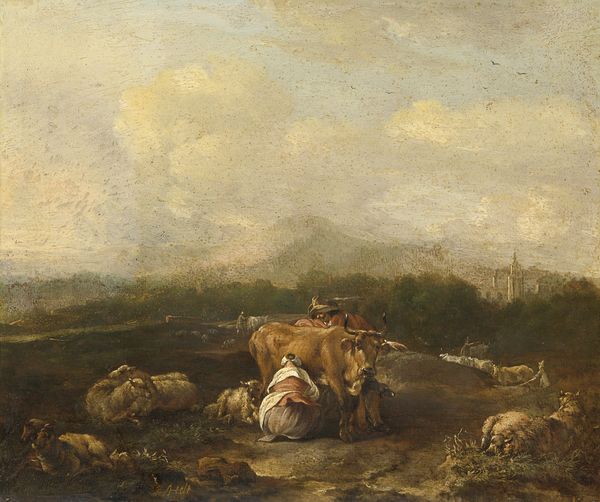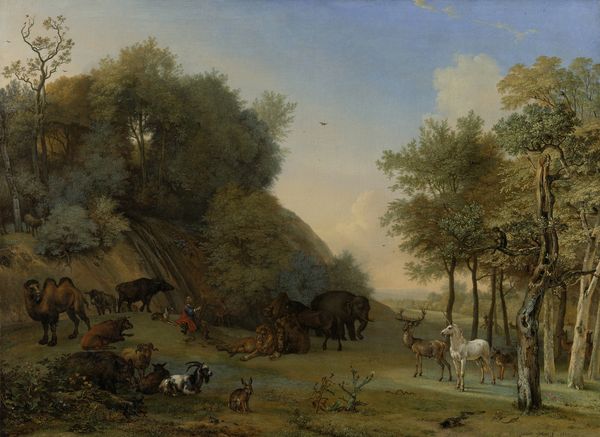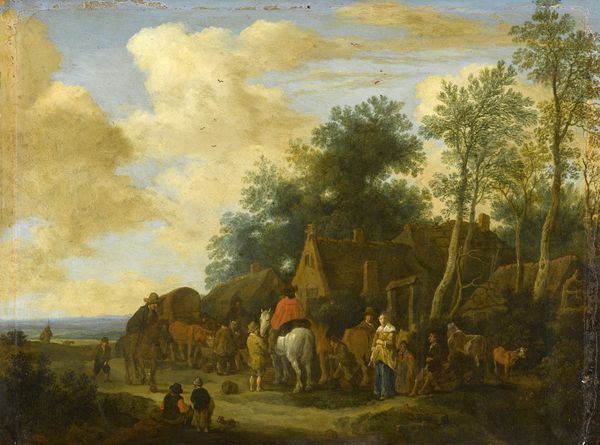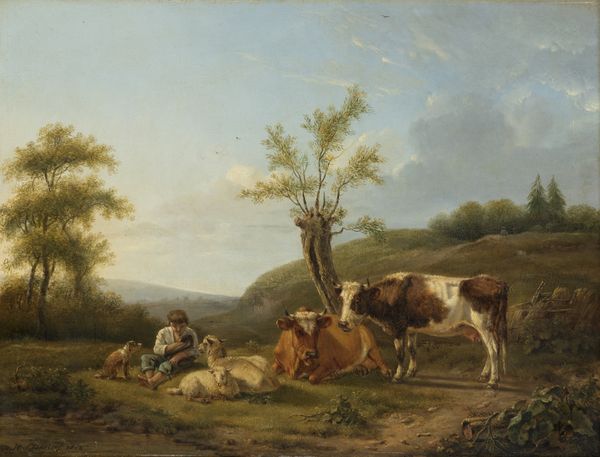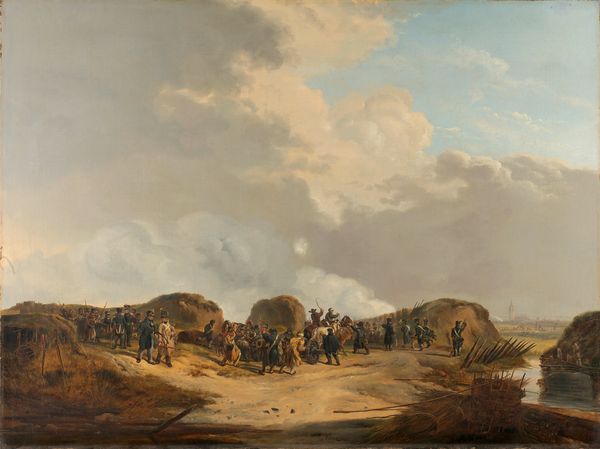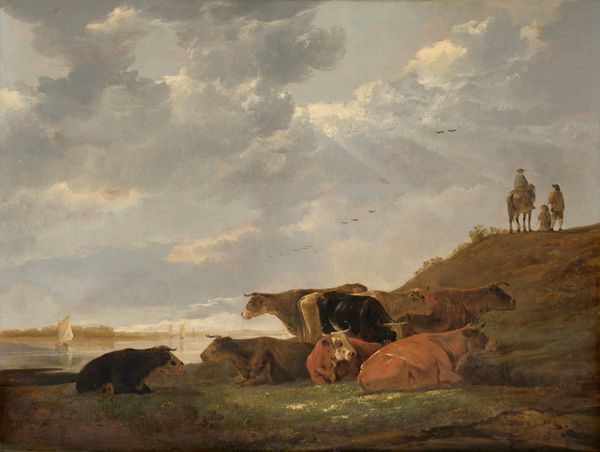
Dimensions: 26.5 x 38 cm
Copyright: Public domain
Editor: We’re looking at Heinrich Bürkel's "The Hay Harvest," painted in 1857 with oil paint. My first impression is one of labor and serenity existing together; there’s such active movement, but also a calm, diffused light across the scene. What catches your eye initially? Curator: The composition, undoubtedly. Bürkel has orchestrated the scene with a masterful manipulation of space and form. Observe how the bulky mass of the hay wagon, centrally placed, acts as an anchor, a stable triangle around which human activity unfolds. The eye is guided not by narrative, but by the interplay of light and shadow, texture and form. Editor: The lighting seems quite strategic. Is there a name for that kind of effect? Curator: Note how the light delicately models the forms, creating a palpable sense of volume and presence. Furthermore, the strategic placement of darks—in the shadows beneath the wagon, along the treeline—serves to heighten the luminosity of the central area. One can see this pictorial device to great effect with the use of *chiaroscuro*, enhancing three-dimensionality, even when employed with the subtle touch demonstrated here. Do you observe the artist’s control over atmospheric perspective? Editor: I see how the background is softer, almost blurred, and it feels very deep. Curator: Precisely. The gradations of tone are crucial to its formal success. These tonal shifts guide the viewer's eye toward a distant town nestled beneath a backdrop of mountains and swirling, emotive clouds, and generate a sense of vast space beyond the human figures within the pictorial space. Editor: I didn't think so much thought went into a picture of farm workers, but now I see it as complex layering! Thanks! Curator: Indeed. It reminds us to engage with paintings and to find the meaning in pictorial terms before any narrative assumptions. A rich experience.
Comments
No comments
Be the first to comment and join the conversation on the ultimate creative platform.
